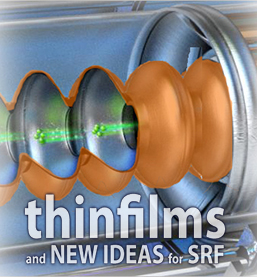Speaker
Description
Many current accelerators use cavities that are manufactured as two half cells that are electron beam welded together, the weld is across the peak surface current of the cavity. This weld can lead to large increases in surface resistance and limit the performance of thin film coated cavities. Many problems with the coating process for thin film Superconducting Radio Frequency (SRF) cavities are also due to this weld. Thin film SRF cavities can perform as well as bulk niobium cavities if the cavity is manufactured seamlessly, without any weld, as they have a more uniform surface, however, they are much more difficult and expensive to manufacture. A cavity with a split longitudinally, parallel to the direction of the electric field, would not need to be welded. These seamless cavities are easier to manufacture and coat. This opens the possibilities to coat with new materials and multilayer coatings. These cavities may allow SRF cavities to operate at significantly better parameters (higher quality factor and maximum accelerating field) than current state of the art cavities. This work discusses development and testing of longitudinally split seamless cavities at Daresbury Laboratory (DL).

